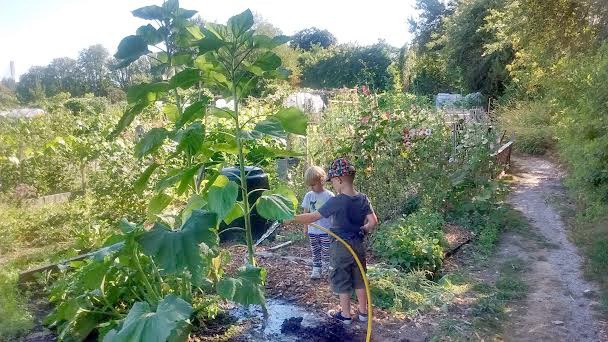The year that is drawing to a close has been designated by the United Nations as the International Year of Soils. The creation of fertile soils is one of the most overlooked essential services provided by nature.
In fact, there are three vital products we tend to take for granted that come from nature.
The first is oxygen in the air we breathe, which is generated by the photosynthetic activity of all the world’s green plants, including tiny phytoplankton in the ocean.
Secondly, through the hydrologic cycle, nature provides us with water we need for drinking and irrigation.
Finally, we require food for sustenance, and this comes to us courtesy of the geologic and biologic processes that create the fertile soils on which we grow our food.
It can take at least 400 years to generate a couple of centimetres of topsoil but current agricultural practices in many parts of the world are eroding topsoil faster than it is being replenished by nature. This is simply not sustainable.
With the world’s population now estimated to be more than 7.3 billion, the need to produce food has never been greater. Scientists suggest the world’s population could reach nine to 10 billion before, hopefully, levelling off by mid-century.
While the development of agriculture and domestication of some plants (mainly wheat, corn and rice) has allowed our population to grow to an unprecedented size, the challenges of feeding almost 10 billion people in a world subject to the vagaries of global climate change and increasing drought have never been greater.
With farming now occupying the most fertile 40% of the land surface of the Earth, there are limited opportunities to expand the land base for agriculture. Nor would it be especially wise to convert more of the forests of the Amazon to soybean and sugar cane plantations. Switching to a mainly vegetarian diet would help to reduce pressure on the land but some people may find such a change in their diet challenging.
Until the mid 1900s, people relied on crop rotation and the application of manures to maintain soil fertility. Then along came the “green revolution,” with the development of fertilizers and new crops selected, mainly, to have shorter stems and larger heads of grain. Thanks to the efforts of scientists such as Nobel prize-wining Norman Borlaug, the catastrophe of famine was averted by a significant increase in crop production.
But the green revolution has brought unintended negative consequences. Farmers forsook age-old techniques of maintaining soil fertility in exchange for quick fixes of applied nitrogen and phosphorus. The development of pesticides allowed farmers to abandon the benefits of crop rotation. After a few decades of use, insect pests develop resistance to pesticides which necessitates continual increases in the amounts applied. And, of course, pesticides have other unwanted consequences, such as the killing of beneficial insects and harm to human health. The devastating impacts of neonicotinoids on pollinating bees are just the latest hazard that comes from relying on chemical pesticides.
So what is the solution? In his book, The End of Plenty, Joel Bourne outlines a path forward that is based on a return to organic farming. For example, he describes the impressive research from the Rodale Institute in Pennsylvania. There, for four decades, farmers have not only been able to match the productivity of conventional farms, they have also vastly improved the fertility of the soil while growing, in some cases, 30% more crops than on conventionally-farmed fields. The soil in the organic fields retains more moisture, has more earthworms and other soil organisms, and leaches far fewer nutrients when it rains. In addition, growing organic crops used 45% less energy and emitted 40% less greenhouse gases than conventional agriculture. Organic crops were more drought-resistant and earned triple the profits of conventional fields. Of course, the organic fields required about 30% more labour on the part of the farmer — but in a world with 10 billion people, creating employment opportunities in agriculture could be a good thing.
There was also one other significant benefit of organic agriculture. Healthy organic soils store much more carbon than conventional soils. Scientists estimate the world’s soils currently store about three times as much carbon than is found in the atmosphere despite the fact conventional agriculture is thought to have already resulted in the loss of about half of the carbon originally contained in these soils.
Bourne estimates a shift to organic agriculture could result in the uptake of about a third of our current carbon emissions. This is a staggering number but it could, in fact, be the salvation to the immense challenges we will face to reduce our greenhouse gases over the next few decades.
Before we look at techno-fixes to remove carbon dioxide from the atmosphere, we should consider an old-fashioned one already proven to work. In his book, Bourne goes on to describe other organic agricultural practices around the world that have brought immense benefits, including rice paddies in Madagascar and India that release far less methane than conventional techniques plus large sugar cane plantations in Brazil that support an amazing diversity of wildlife.
The End of Plenty provided me with a profound sense of optimism that a plausible solution to global warming and increasing human population lays simply at our feet.
--Elaine Golds is a Port Moody environmentalist who is conservation/education chair of the Burke Mountain Naturalists and member of the boards of the Colony Farm Park Association and the Port Moody Ecological Society.



